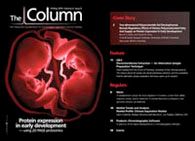Metabolomics study
Using metabolomics to study the different ways that people digest and process the food that they eat could help researchers to understand the mechanisms behind conditions such as diabetes and cardiovascular disease, say researchers from the Munich Functional Metabolomics Initiative.

Using metabolomics to study the different ways that people digest and process the food that they eat could help researchers to understand the mechanisms behind conditions such as diabetes and cardiovascular disease, say researchers from the Munich Functional Metabolomics Initiative. To do this researchers have begun a study called HuMet, which closely studied 15 metabolically healthy young men for four days. During this time the volunteers underwent four different nutritional interventions, along with physical exercise, while 56 blood plasma samples, 25 urine samples and 32 breath condensate and breath samples were taken. Aliquots of the collected samples were analysed using PTR-MS, LC-MS-MS, GC-MS, GCxGC-MS, FT-ICR-MS and NMR, to yield qualitative and quantitative information on around 400 metabolites.
"In general, all people react similarly to specific nutritional components," says Hannelore Daniel, professor of nutritional physiology, who worked on the study, "but there are big differences in their responses." Beginning with an empty stomach, subjects were given glucose, which caused their blood sugar levels to rise. "Obviously all values will rise", says Daniel. "The blood sugar level must go up. But it is very interesting to observe the differences in the way the levels rise and fall off again. It took four hours for the test subjects' blood sugar levels to come back into alignment with each other."
It is hoped that eventually the study of metabolomics will enable custom-tailored therapies for people with metabolic disorders and nutrition plans for people wanting to lose weight.
This story originally appeared in The Column. Click here to view that issue.

Determining the Effectiveness and Safety of Cinnamon Derivatives for Diabetes Treatment with HPLC
March 27th 2025Cinnamon and its byproducts have been used for many years because of their antidiabetic effect. In a joint study conducted by Gazi University (Ankara, Turkey) and Düzce University (Düzce, Turkey), high performance liquid chromatographic (HPLC) and thin-layer chromatography (TLC) analyses, macroscopic analyses, and enzyme inhibition assays on diabetes-related enzymes were performed on cinnamon samples to determine whether they are safe to use for health purposes.











